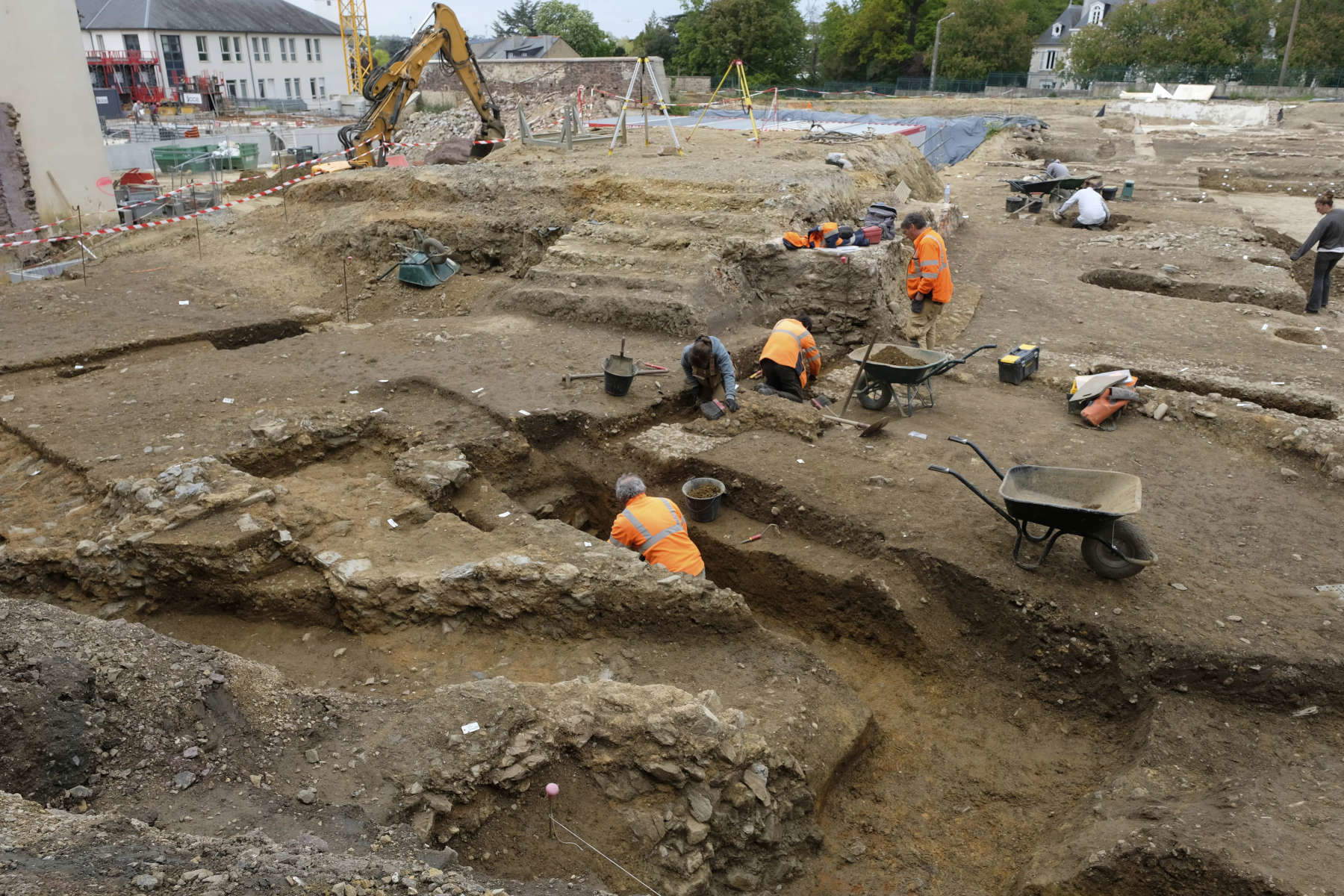In France, a team fromInrap (the National Research Institute of Preventive Archaeology) is conducting an excavation at the site of the former Hôtel Dieu hospital in Rennes, and has already unearthed the remains of a residential area located north of the Roman city of Condate (the Roman Rennes), occupied between the 1st and 3rd centuries. In addition, traces of a vast sanctuary and part of a necropolis dating back to the 4th-6th centuries have been found.
The ancient remains discovered in 2022 and 2024 are arranged around a north-south main street and two east-west axes that intersect at right angles, demarcating urban blocks with different functions. The earliest roads date back to the founding of the city, built after large-scale deforestation and excavation work. However, the end of the first century marked profound changes, particularly with the introduction of masonry. This development succeeded a wooden building erected at the beginning of the present era. Stone warehouses, stores and houses sprang up, and the first streets were redone, fully integrating the district into the then booming city. In this regard, in 2024 archaeologists unearthed the northern wall enclosing the sanctuary courtyard. The wall, more than 100 meters long, houses at least the temple in its northern part, while an east-west oriented street is integrated into the religious complex in its southern part. The size of the complex, unique for the city of Rennes, suggests that it may be the civic sanctuary of the city of the Riédons, known only through inscriptions discovered in reuse, particularly in the foundations of the 3rd-century wall.
During this period, the district had numerous large domus, whose interior elevations were covered with paintings, numerous fragments of which have been found. In the 4th century, there was also a quarry and necropolis within the site. Nevertheless, the end of the 3rd century then marked the decline of the district. The public sanctuary was dismantled and the stones of the surrounding wall were recovered, probably for the construction of the castrum around 270-280 BC. In the same period, to the northwest of the excavation, a domus was completely dismantled for the opening of a quarry intended for the extraction of alluvial sands. Toward the end of the third century in the ruined areas a funerary space was established in addition to this, active until the eighth century and numbering more than 600 tombs, about fifty in the present area of the excavation, and extending north to the Parc des Tanneurs.
 |
| France, Roman-era shrine discovered in Rennes |
Warning: the translation into English of the original Italian article was created using automatic tools. We undertake to review all articles, but we do not guarantee the total absence of inaccuracies in the translation due to the program. You can find the original by clicking on the ITA button. If you find any mistake,please contact us.